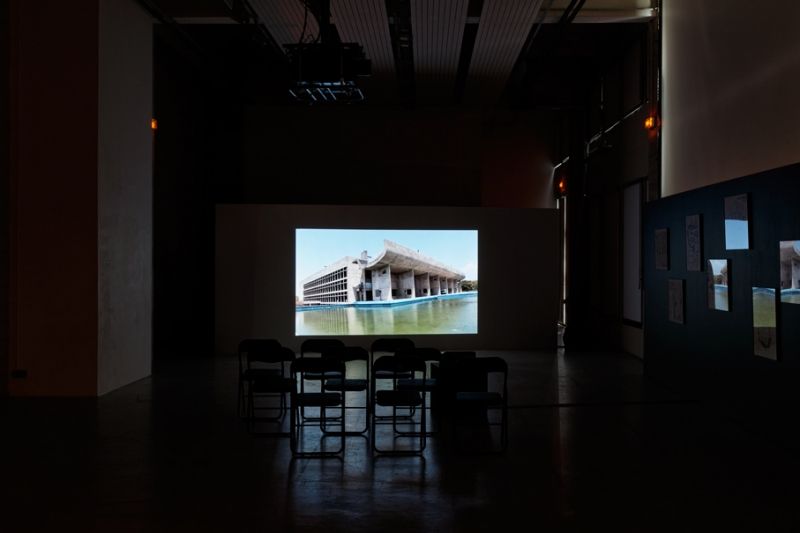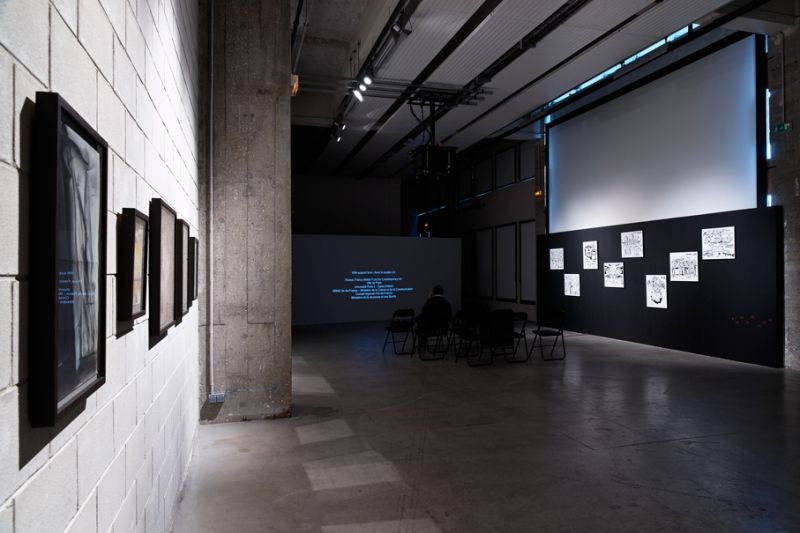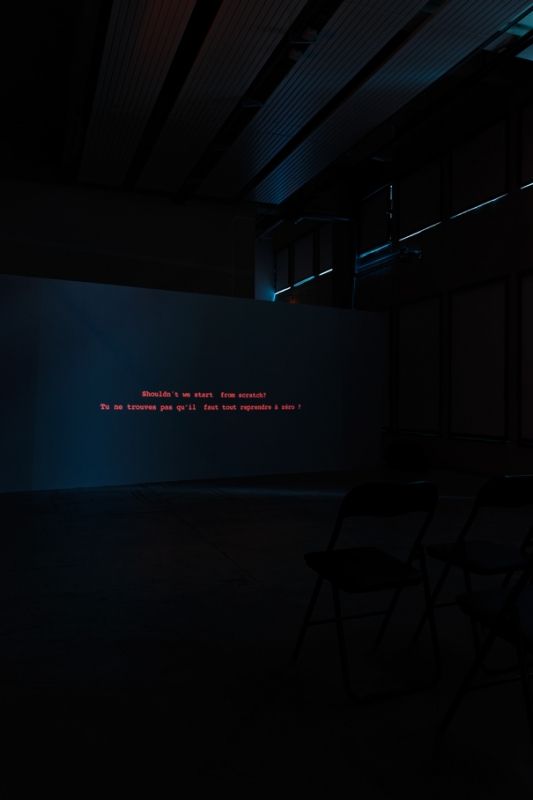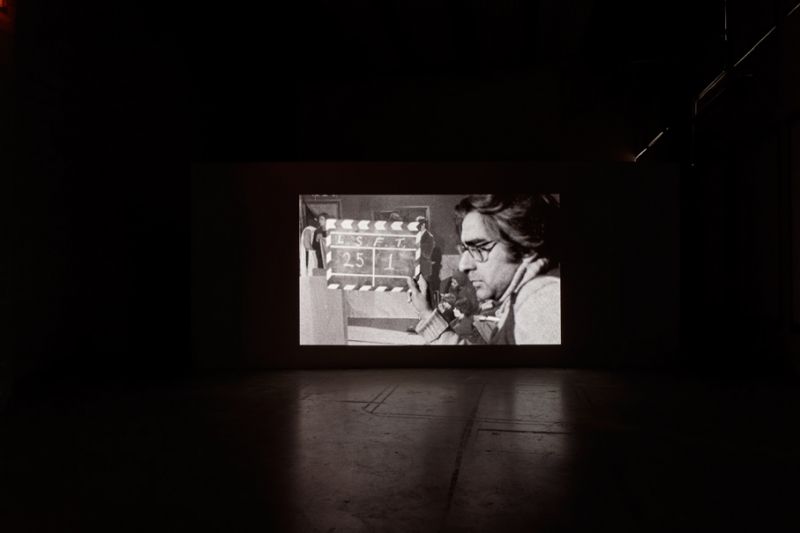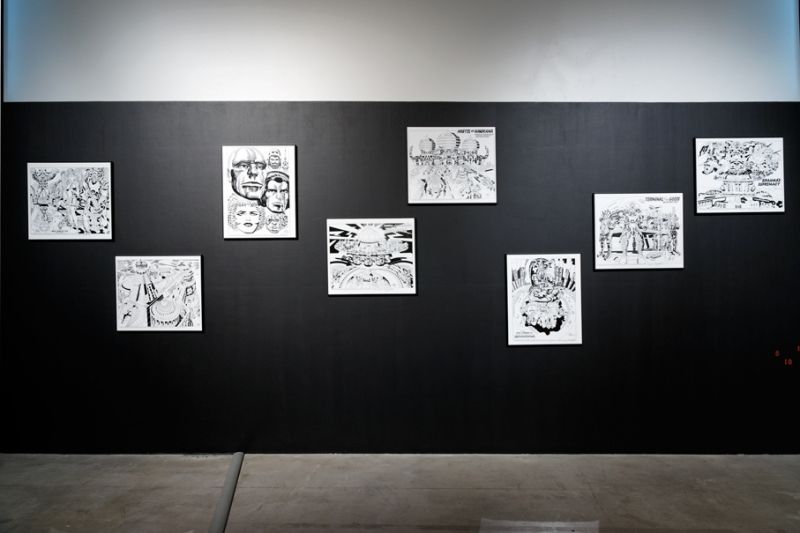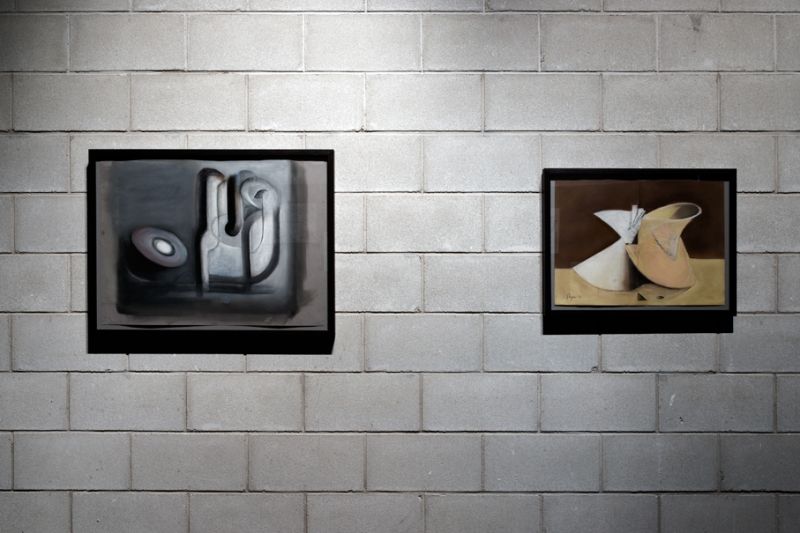15 June – 23 July, 2011 Betonsalon presents the first solo exhibition in France by The Otolith Group, the London-based artist collective founded by Kodwo Eshun and Anjalika Sagar. Concerned with exploring the legacies and potentialities of the essay film, cosmopolitan modernisms, speculative futures and science-fictions, The Otolith Group has developed a multifaceted practice that integrates video and film making, exhibition curation, publication and the elaboration of public platforms. At the core of the exhibition is The Otolith Trilogy, consisting of Otolith I (2003), Otolith II (2007) and Otolith III (2009), each of which considers the potential of specific political and cultural moments to evoke alternative futures. Projected according to a set schedule, these essay-films alternate with assemblages that revisit The Otolith Group's lecture performance Communists Like Us (2006), their audio-essay The Secret King in the Empire of Thinking (2011) and the work of Marvel comics artist Jack Kirby and artist Vidya Sagar, both of which informed the methodologies of The Otolith Trilogy. These assemblages, designed specially for Betonsalon, constitute a near-subliminal exhibition that appears and disappears within the scheduled screenings. The folding of a temporary display inside a scenographic proposition opens up new passageways through The Otolith Group's constellation of allusions and references. A Lure a Part Allure Apart embraces The Group's preoccupation with the disjunctions of temporality and the science-fictions of the alternative present. The Otolith Trilogy Projections schedule: Otolith I: 11h00, 13h40, 16h20 Otolith II: 11h30, 14h10, 16h50 Otolith III: 12h40, 15h20, 18h00 Otolith I is set in the 22nd Century, when humans are no longer able to survive on earth and live in permanent microgravity onboard the International Space Station (ISS). Otolith I is narrated by exoanthropologist Dr. Usha Adebaran Sagar, the future descendent of Anjalika Sagar; Adebaran Sagar's reconstructs life as it was on earth through her research into the archives of dead media. Staging an encounter between the anger and depression of the 2003 protests against the Coalition of the Willing's invasion of Iraq and the real-life meeting in Moscow, 1973 between cosmonaut Valentina Tereshkova, the first woman to orbit the Earth in 1963 and Anasuya Gyan-Chand, President of the National Federation of Indian Women, Otolith I evokes the non-metaphorical weightlessness of alien intimacy.
Again narrated by Dr.Adebaran Sagar, Otolith II descends from the agravic environment of the ISS to compare the hypergravic compression of Dharavari, Mumbai's megaslum with the mid-century planned urbanism of Chandigarh. Otolith II explores the pressures endured by citizens inhabiting these contrasting and competing versions of the city of tomorrow. Contemporary moments from lives lived in the shadow of Le Corbusier's megastructural complex are juxtaposed with scenes of immaterial labour on the sets of Film City in Mumbai and in sweatshops in Dharavi. Otolith II surveys and resurrects the transtemporal fragments of post-Independence modernism via future-invocative alliances between socialist feminism, Nehruvian secular projects and transnational solidarity in order to assemble a present-day zodiac of the possible.
Otolith III inhabits the unrealised potentialities of Satyajit Ray's screenplay for The Alien, a film that was never made. Written in 1967, The Alien would have been the first science-fiction film to be set in contemporary India. Otolith III returns to 1967 to propose an alternative trajectory in which the fictional protagonists of The Alien confront Ray and attempt to seize the means of production in order to redeem their unfinished status. Reconfiguring visual and aural sequences from fourteen Ray's films; drawing upon Jack Kirby's visualisations for the unrealised screenplay of Roger Zelazny's novel Lord of Light (1967); and informed by the methodology of Pier Paolo Pasolini's Appunti per un film sull India (1968), Otolith III coalesces into a 'premake' (an expression borrowed from Chris Marker designating a remake that is completed before the original) of Ray's film.
Scheduled to appear after the projection of Otolith I, the first in a series of three assemblages designed for A Lure a Part Allure Apart revisits The Otolith Group's Communists Like Us (2006). Conceived as notes towards Otolith II, Communists Like Us arranges a dialogue between Soviet and Maoist delegation photographs of socialist internationalism, the subtitled conversation between activist and philosopher Francis Jeanson and Veronique, his Maoist student, played by Anna Wiazemsky in La Chinoise (Jean-Luc Godard, 1967) and compositions by Cornelius Cardew and Ennio Moricone.
In the first assemblage, a sound montage isolated from a sequence of Otolith II that compares wallet-making labour with work on an advertisement for financial services, is brought into relation with subtitles drawn from the dialogue for La Chinoise. Acting as an alternative foreword to Otolith II, this scriptoaural assemblage invites an encounter between the temporalities of communist projections and the precarities of contemporary industrial and immaterial labour.
The second assemblage, which begins after the conclusion of Otolith II, is the audio-essay The Secret King in the Empire of Thinking (2011). Narrated by Anjalika Sagar, the essay is a redescription, set in an undated future, of Jack Kirby's 1978 visualisations, commissioned for the unrealised film Lord of Light, which was based on Roger Zelazny's 1967 science-fiction novel Lord of Light. Made two years after the release of Otolith III in which Kirby's science-fictional illustrations played a substantial role, The Secret King in the Empire of Thinking indicates The Group's propensity to revisit their constellation of references so as to invoke the times and spaces of the revenant. The Secret King in the Empire of Thinking anticipates the third assemblage and proposes the final fold in the spatiotemporality of the exhibition.
Appearing after the conclusion of Otolith III, a projection announces a commission by The Institute For The Extraterrestrial Cultures in 2014, entitled Protocol Division, Biohazard Facility For Visitation Sector 7, Quadrant 6, Naxalbari, Bengal. This institutional fiction has travelled outside its initial appearance in Otolith III in order to provide a frame for the works of Jack Kirby and Vidya Sagar, which emerge in two designated areas within the space of Betonsalon, for the time of this assemblage. Sagar's seven pastels and Kirby's ten photographic prints are co-related with a series of projected numbers, imaginary titles and prospective dates, all of which operate to locate Sagar and Kirby's works within the fictions of the exhibition. By linking delayed memories with anticipated presences and reordering scripts and sounds with images and voices, the scenography of A Lure A Part Allure Apart reveals itself to be the infernal cycle of an involuted universe.

